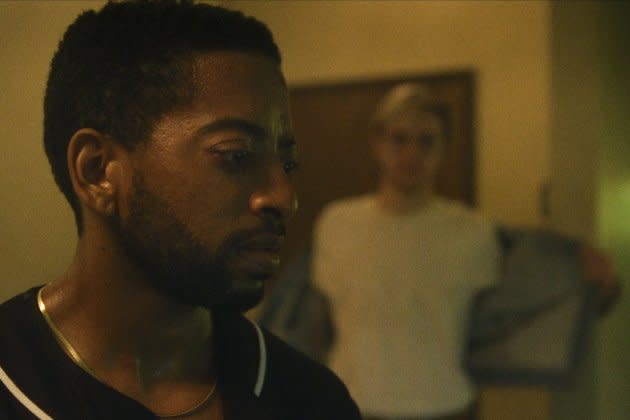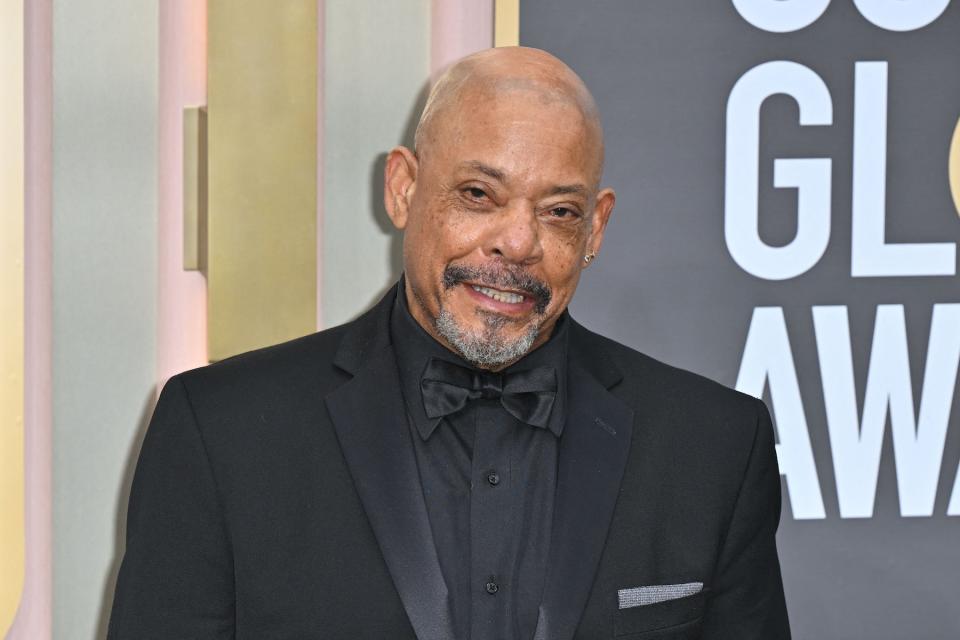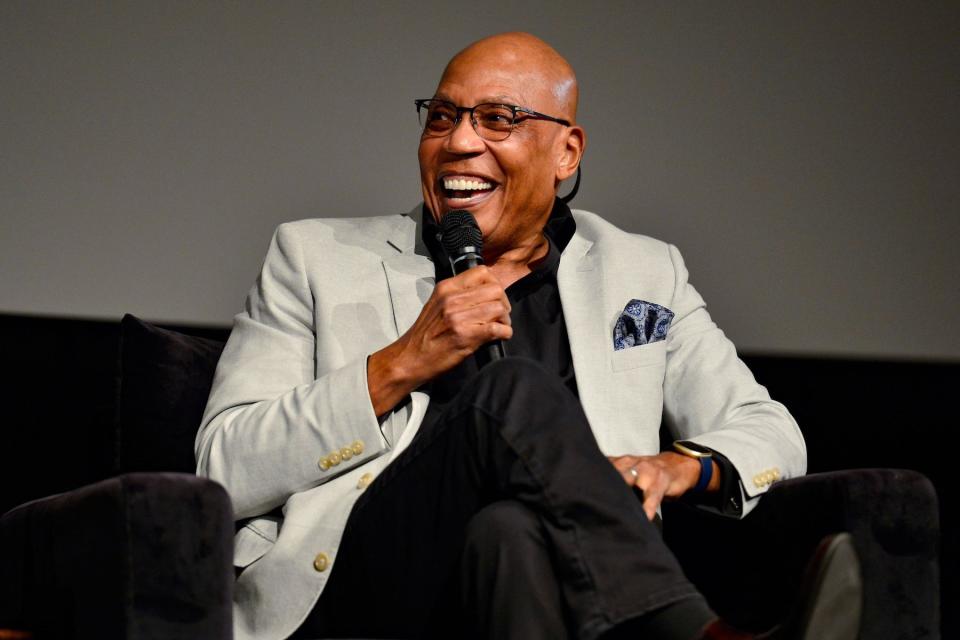‘Dahmer’ Directors Say Emmy-Nominated Netflix Series Honors Victims
- Oops!Something went wrong.Please try again later.
- Oops!Something went wrong.Please try again later.

When it came to Jeffrey Dahmer’s apartment in Netflix’s Dahmer – Monster: The Jeffrey Dahmer Story, director Carl Franklin pictured a gritty fish tank filled with yellow-green algae and lifeless fish. He wanted to reach audiences on a visceral level, placing viewers in the notorious serial killer’s putrid living room from the victim’s perspective.
“I wanted to create more of a sensory world as opposed to just a set — something that would evoke a certain aroma or a stench, let’s say, rather than aroma,” Franklin tells Rolling Stone.
More from Rolling Stone
Miguel Bosé's Stolen Vehicle Recovered After Alleged Armed Attack in Mexico City
Justin Timberlake Might Not Be as Innocent as He Seems in Mysterious 'Reptile' Trailer
The Fugitive Nissan CEO Smuggled Out of Japan in a Music Box
Centering the victims’ stories were key to Franklin and Paris Barclay, who both received Emmy nominations for directing episodes in the anthology series, and say they aimed to avoid empathy for the Milwaukee-born psychopath who killed 17 boys and men. The series quickly became one of Netflix’s most-watched shows, racking up 1 billion hours viewed in its first 60 days and 13 Emmy nominations last month — but not without considerable backlash.
Critics of the series say that it hyperbolized Black violence and reintroduced trauma to the victims’ families. But for Franklin and Barclay, Dahmer – Monster: The Jeffrey Dahmer Story, was a story that needed to be retold.
When series co-creator Ryan Murphy first told Franklin (Devil in a Blue Dress) about the series, he wasn’t excited about it. He didn’t read past the headlines after the serial killer’s capture in 1991, but says the cinematic opportunities of the first episode’s 37-page script enticed him. In “Bad Meat,” the story begins at the end. We meet Glenda Cleveland (Niecy Nash), a neighbor worried about a foul odor. After brushing off her complaint, Dahmer invites Tracy Edwards (Shaun J. Brown) to his apartment, who later escapes and alerts the authorities. By focusing on Cleveland’s and Edward’s perspective, Franklin contends that the viewer expresses little compassion for the killer. It’s not until later in the series that viewers learn of Dahmer’s personal life and upbringing.
“We didn’t even see his face until we were well into the first few minutes of the episode,” Franklin says of the show’s mass murderer.
Kidiocus King-Carroll, an assistant professor of African Studiies at the University of Wisconsin-Milwaukee, says that although the Emmy-nominated episodes are victim-focused, the true crime series as a whole glamorized Dahmer’s reign of terror.
“At the end of the day, it still left people with the question, who is this for?” King-Carroll says.
Following the show’s release, tasteless Dahmer Halloween costumes circulated online, epitomizing the spectacle surrounding the Netflix series. King-Carroll added that the City of Milwaukee was also missing from the show, which has a history of police raids of LGBTQ+ establishments and overpolicing in the city’s predominantly Black North Side.
“This inherently commodifies Black, queer bodies,” he says of the series, “while at the same time it’s a story that’s rarely told.”
To Barclay, TV and films need to give more attention to the wrongful deaths of Black, Latinx, and Indigenous people. When news first broke about Dahmer in the Nineties, Barclay remembers the horror and being close in age to some of the victims.
“Those serial killers were under our skin, especially as a Black gay man, and knowing that so many of the victims were Black gay men,” Barclay says. “We read voraciously about it and I was basically living in fear of that kind of Jeffrey Dahmer killer.”

The nine-time Emmy-nominated director felt the Netflix anthology series renewed interest in the people on the other side of Dahmer’s violent attacks and connected to a larger societal narrative of white privilege, racism, and policing. They viewed the victims as three-dimensional beings with families and aspirations.
“When Black and brown people are violently killed, it-s a one-day story if it-s a story at all,” Barclay says.
According to Barclay, the victims’ humanity comes first, and in Episode Six, “Silenced,” viewers meet Tony Hughes (Rodney Burford), a deaf man and aspiring model, who starts a relationship with Dahmer before his sudden death. Prior to this, though, we’re introduced to Hughes’ family and his friends, and learn of his career goals and unrelenting spirit.
“From the very beginning, his birth is a jumble of sound and then we find out he’s deaf,” Barclay says. “And then we’re in the club, hearing the music the way he hears it, just the rhythmic thump as he pats his heart, and we’re bringing you into his silent world.”

Tony Hughes’ mother, Shirley Hughes (played in the series by Karen Malina White), was outraged by the series, telling The Guardian, “I don’t see how they can do that… I don’t see how they can use our names and put stuff out like that out there.” And Eric Perry, cousin of Dahmer victim Errol Lindsey, tweeted that the series reintroduces trauma to the victims’ families and questioned how many more shows and movies on the killer audiences need. Barclay says that audiences have told him that Tony was seen and viewed as a hero.
“I understand how it would be impossible for the family to watch and to experience this the way the audience has,” Barclay says. “It would just bring up too much pain.”
As a former Directors Guild of America president, and a member of the writers’ and actors’ unions, Barclay says he sympathizes and stands in solidarity with his fellow members. He refused to comment on the actions of Ryan Murphy, who continued filming the newest American Horror Story installment amid the writers’ strike, but says he’s most concerned about AI protections.
“They need to have the kind of guardrails that are actually electrocuted fences around the use of AI,” Barclay says. “And they need to, or we need to, I should say, negotiate a way that we are compensated when generative AI ingests our material, and then regurgitates it.”
Best of Rolling Stone

